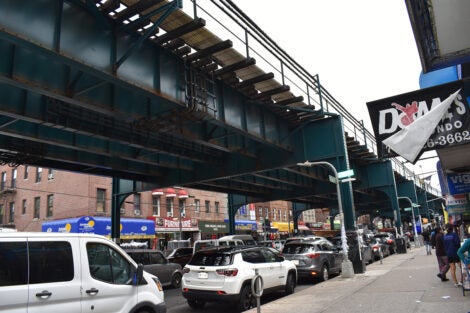The more noise, the higher the CVD risk, study finds
December 4, 2023 – A new study led by Charlie Roscoe, research fellow in environmental health at Harvard T.H. Chan School of Public Health, found that nighttime and daytime noise generated by things like cars, trucks, trains, and airplanes was linked with increased risk of cardiovascular disease (CVD) in a group of women in the U.S. Roscoe discusses the significance of the findings, and why the health impacts of noise should be taken seriously.
Q: What do you want people to know about the potential harms of noise exposure?
A: For one thing, noise is the second largest environmental cause of health problems after air pollution, according to the World Health Organization. It’s been linked with issues ranging from sleep disturbance to poor concentration to risk of metabolic and cardiovascular disease and dementia.

When I started learning about noise, I assumed that noise that led to poor quality of sleep was the main mechanism driving any kind of associations with health impacts. But I’ve learned that even if you’re not conscious, or you don’t wake up in the night from noise, you still have a stress response, which results in brain activity that leads to dysregulation of your stress hormones, which can lead over time to problems such as insulin resistance, diabetes, and cardiovascular issues.
There are people who live on busy roads who say things like, ‘I don’t even hear the noise.’ But even if you don’t hear it, or you don’t consciously notice it, it’s potentially still harmful to your health. I think that was the biggest surprise to me when I started to look into this research.
Q: What prompted your study and what were its main findings?
A: Most research on the topic of noise and health is from Europe. These studies suggest that higher levels of environmental noise are linked to increased risk of CVD, although some of the findings are inconsistent. Few studies about the relationship between noise and CVD risk have been conducted in the U.S., and no nationwide study in the U.S. has looked at the difference between daytime and nighttime noise from anthropogenic sources, including traffic noise, when it comes to CVD. So we decided to look at this question using 30 years of data from the Nurses’ Health Study (NHS), a longitudinal study aimed at assessing risk factors for chronic disease among women. We considered how a variety of factors may impact the connection between noise and CVD incidence—such as population density, region, air pollution level, greenness level, and neighborhood socioeconomic status. We also looked at whether inadequate sleep made any difference. To predict outdoor sound levels, we used a geospatial noise model created by National Park Service researchers, based on acoustic data from monitoring sites across the U.S.
We found small positive associations of both nighttime and daytime noise exposure with CVD—including both coronary heart disease (CHD) and stroke—although the connection was stronger for CHD. We found that not getting enough sleep didn’t factor into the relationship between noise and CVD risk in this cohort.
Even though the increased risk of CVD was small—about 4% increased risk for each increase of roughly four decibels—the study was looking at a relatively healthy population of nurses. My guess is that the risk would be higher across the total population. And even a 4% increased risk of CVD across the U.S. would be a huge amount of additional risk for the population as a whole and would place a large burden on health care and the economy.
Our preliminary findings were referenced in a June article in the New York Times about the health impacts of noise.
Q: What can be done to protect people from potentially harmful levels of noise?
A: There are regulations in some parts of the world regarding noise levels. For instance, in Japan and in the UK, there are regulations on how loud trash collection can be. The trash trucks cannot make that much noise, especially not at four in the morning. In Paris, there are noise sensors that can detect extremely loud traffic. People can get a fine if their car exhaust is too loud. So regulations can change things for the better.
In America, the way some cities are built could make it a challenge to reduce noise. In some places, rail lines or highways border residential neighborhoods and airports are close to people’s houses. The neighborhoods near these transportation corridors tend to be where the most underserved communities live, with a high concentration of people living in poverty and people of color. These are known as environmental justice populations. It would likely require major infrastructure change to alter the path a railway takes through a city, or to bury a road underground instead of having it cut through a neighborhood. But sound barriers and home insulation are the sorts of affordable solutions that could help. Tackling road traffic directly, which is the source of most residential noise, is by far the most effective solution. By investing in active transport—things like walking and cycling infrastructure, including e-bikes—and clean public transit, such as electric buses and low-polluting trains, cities can not only reduce noise levels, but also reduce air pollution and tackle climate change, with substantial health co-benefits.
Feature photo: iStock/Nandani Bridglal
Photo of Charlie Roscoe: Yael Koren
